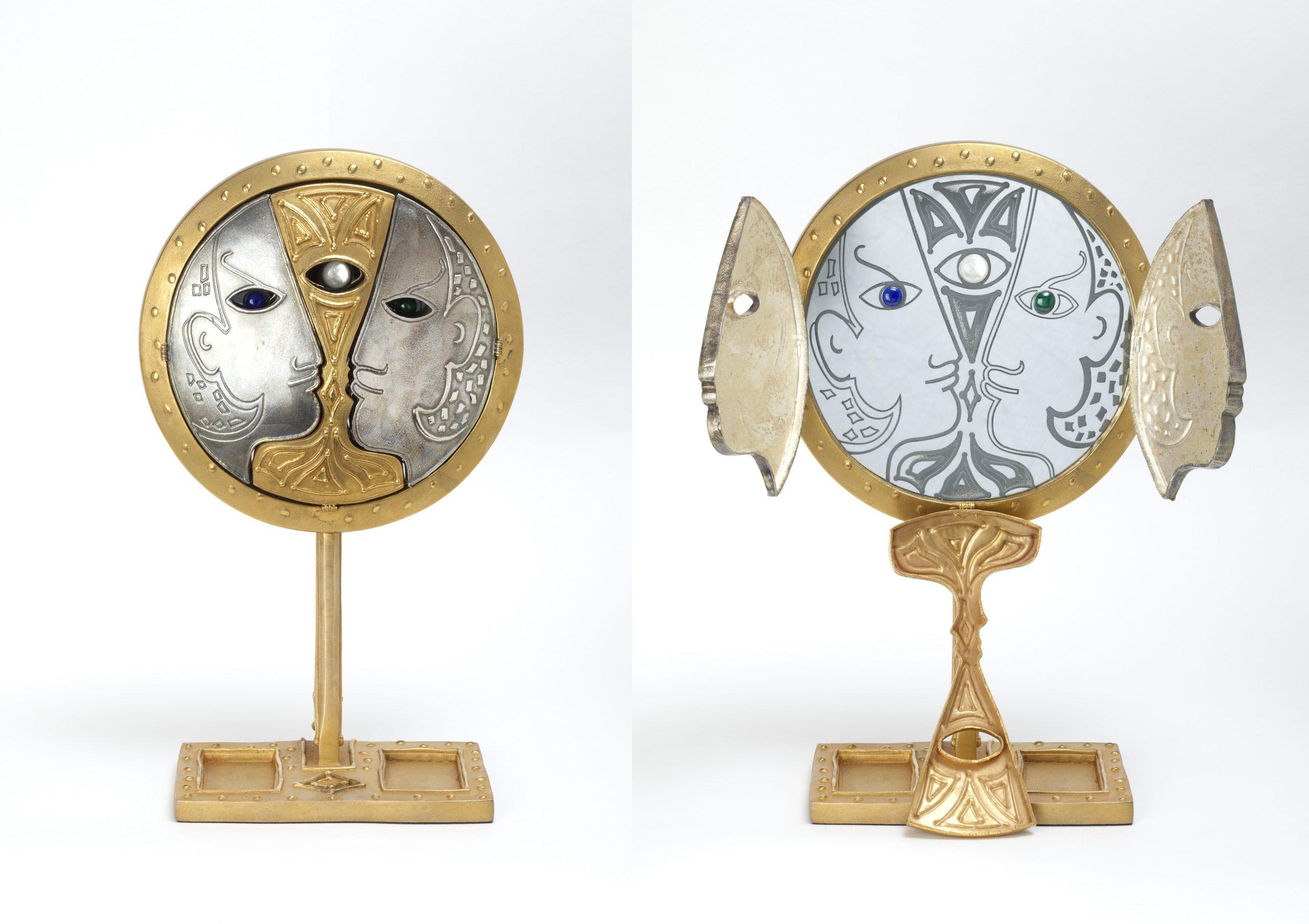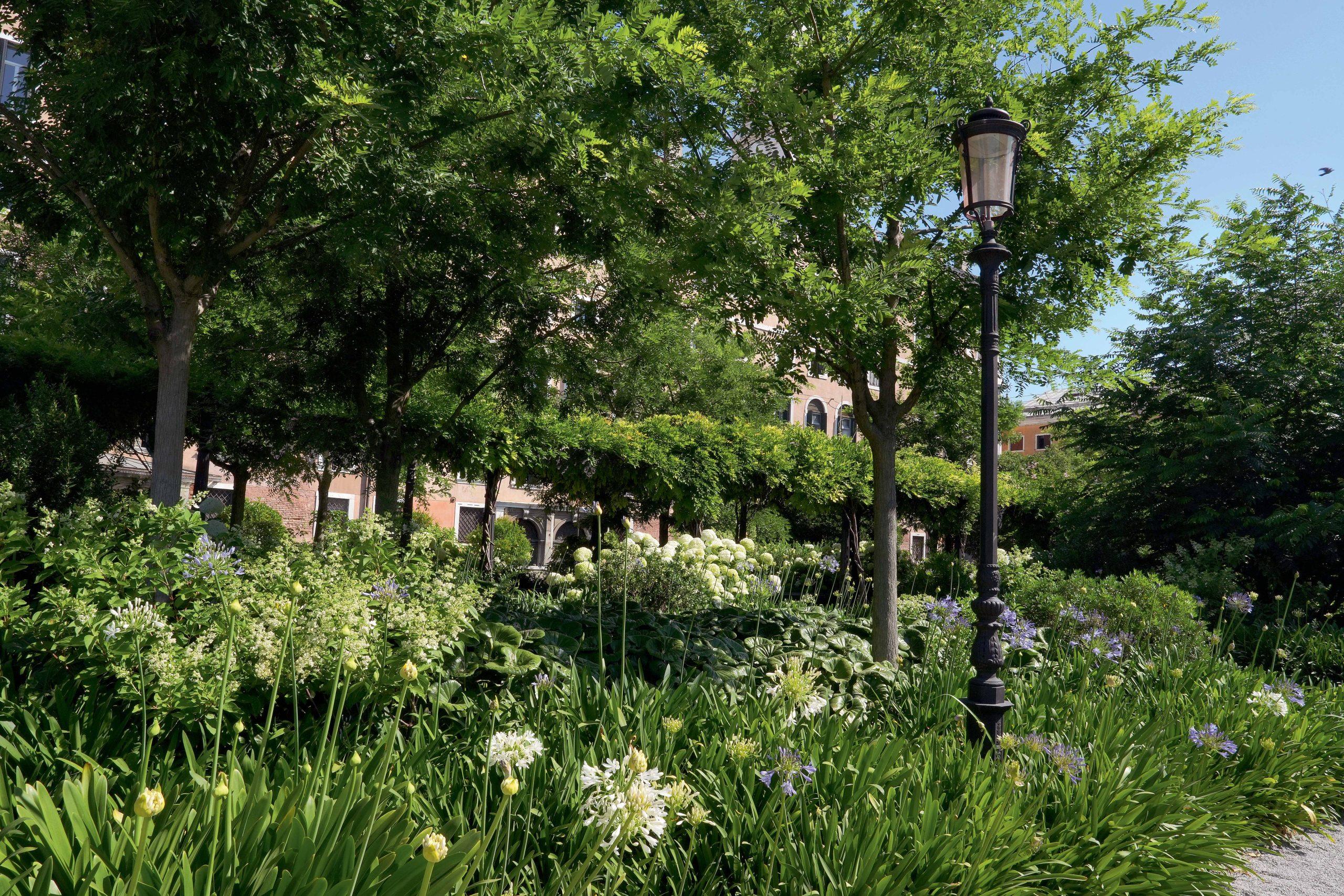The Peggy Guggenheim Collection in Venice pays homage to Marina Apollonio, an exponent of international optical and kinetic art, with a retrospective that traces her history and her connection with Peggy Guggenheim. Born in 1940, Apollonio stands out for her rigorous research applied to forms and materials, as clearly highlighted by the approximately one hundred pieces on display, which attest to the transversality of her language, from sculpture to drawing, painting, static and moving works. We offer you some reflections by the curator Marianna Gelussi, taken from the catalogue by Marsilio Arte
For an Eros of Programmed Art
“My artistic investigations seek to be explorations of phenomenological possibilities related to forms and basic structures. Basic form inherently contains total abstraction in that it is made up of a mathematical program. Hence, action takes place with absolute precision, in a direct relationship between intuition, on an optic level, and verification, within a mathematical system. Having selected a primary form, such as a circle, I study its structural possibilities as a means of activating it, aiming for the best results with the maximum economy” [Marina Apollonio, Marina Apollonio, exh. Brochure (Trieste: Centro Arte Viva Feltrinelli, 1966)].
Thus Marina Apollonio described her artistic practice in 1966, on the occasion of her first solo exhibition held at the Centro Arte Viva Feltrinelli in Trieste (fig. 3). From the beginning, she was fascinated with the rational, objective language of geometry and in particular the circle, a shape that would eventually become the artist’s fetish. […]
Infected by the “art virus”, as she likes to remember it, Apollonio started out on her own rigorous path alone, without subscribing to any group and without the support of her father, then Director of the Archivio Storico of the Biennale, the reason for which the family relocated to Venice in 1948. He was worried about the material difficulties of her career choice (“you’ll go hungry”) and by those who might suspect him of nepotism (she would be systematically excluded from all the exhibitions with which he was involved). Nevertheless, in March 1965 she won the Chiodo d’Oro prize in Palermo—followed a year later by her solo show ‒ with Rilievo sbarra 04 from 1964 (later destroyed), which had been submitted by Getulio Alviani, unknown to her and her father: “a very thin weaving of metal sheets, a visual field with alternating space flickering in angular lights on a path of suggestive intermittency: light + fractions of time and lines,” as the work was described in an article published by L’Ora [“Il Chiodo d’Oro,” in L’Ora (Palermo), March 12–13, 1965; Archivio Marina Apollonio]. In 1965 she was also invited to participate to the third edition of New Tendency (Nova Tendencija) in Zagreb, where she exhibited her two photographic collages Dinamica circolare 5/CN and Dinamica circolare 5/CP (both 1965).6 Each work features a circle whose inner area appears structured according to a progressive system of black and white circles of gradually varying thickness around an off-kilter center, which gives depth and instills a sense of estrangement towards its contemplative pull. The inverse coloring of the two works ‒ one with a white background and the other with a black background ‒ forms a positive/negative diptych, a poetics of contrasts the artist adopted as a creative principle and one she fully employed in the following years. Apollonio’s career, well established by now, experienced an acceleration: Zagreb opened her international horizons and marked her introduction to Dadamaino, with whom she would share a close, valuable friendship in an artistic milieu mostly dominated by men. Numerous group and solo shows followed, in Italy and abroad (Dadamaino would initiate, with Alviani, Apollonio’s solo exhibition in 1967 at the Galleria Il Cenobio in Milan, together with a constellation of artists who comprised the Arte programmata and Kinetic art avant-garde.
Apollonio’s work developed through mathematical planning and technical experimentation
along various veins of investigation. She tried different supports in painstaking creations that required time, precision, and, in the case of painting, the application of multiple layers of paint and the peeling-off of stencils. The programming, the search for dynamism, essentiality, dryness, lack of embellishment, and the desire to search further remained constants in her work. […]
Ever since her first drawings in 1963, the circle has stood out as the artist’s favorite shape: “If Mondrian’s choice is a straight line, Apollonio’s is a curve,” noted a member of the press in 1967 on the occasion of her exhibition at Il Cenobio in Milan [Gian Franco Arlandi, “Apollonio al Cenobio di Milano,” press clipping (1967); Archivio Marina Apollonio]. In 1963 her explorations on activating the circle gave birth to the Dinamiche circolari, a series of now iconic works the artist continues to make and develop to this day and has continued to innovate in the Fusioni circolari, beginning in 2016. The circle is organized in graphic textures primarily in black and white, concentric or eccentric rings of increasing or decreasing width, or reorganized circular arcs.
With spatial perception altered by an “attractive-expansive and fluid-elastic,” the circle emerges from its two dimensionality [Marina Apollonio, “Ricerche di attivazione visuale,” Marina Apollonio, exh. brochure (Milan: Il Cenobio, 1967), n.p.]. Conceived as either static or dynamic objects, with mechanical or manual rotation influencing the perceptive impact, the Dinamiche circolari push the circle beyond the limits of its surface and come to life in the eyes of the viewer. Beginning with the circle, Apollonio’s spatial investigations moved the form toward new dimensions that expanded beyond the frame and found fulfillment in the creation of environmental works, such as Spazio ad attivazione cinetica ‒ planned between 1967 and 1971 and realized in 2007 for the exhibition Op Art at the Schirn Kunsthalle in Frankfurt13 ‒ or Entrare nell’opera on view at the Peggy Guggenheim Collection, where viewers are immersed in a vortex activated by a three-screen projection on contiguous walls, each reproducing an undulating circular movement of black-and-white textures that meet and merge into each other. […]
Apollonio’s three-dimensional and spatial works based on the circle ‒ multiplied, neatly assembled ‒ carried over into sculpture as well, a formal iteration to which her choice of steel added the reflective power of metal. Her Strutture, hieratic compositions of superimposed metallic circles, and Spirali, created in 1966–69, capture and fragment the continuously changing environment around them and merge in space with time itself. When in motion, the motorized rotating Struttura ad anelli 5, with five thin circles assembled at right angles, generates new forms in air as the relationship between the angle and the circle is virtually transformed. […]
When asked about her obsession with the circle, Apollonio often jokes: “I had a good compass.” This is partly true—her precious compass that helped her trace circumferences up to two meters in diameter is still in her studio today ‒ but the playfulness of her answer tempers her own very serious artistic convictions. […]
The circle offers a clean slate and expresses a certain radicality. It is a way of exploring foundations, of affirming a rejection of the known and of established canons. It represents the will to move toward new territories, a desire for ascent. More than tiresome automatism, the circle’s repetition is a fervent impulse to push onward. It expresses the satisfaction that comes from searching and discovering, which is once again reinforced by repetition, and leads forward. […]
Marianna Gelussi
The text is taken from the catalogue of the exhibition Marina Apollonio. Beyond the Circle, Marsilio Arte, Venice 2024
BIO
Marianna Gelussi is an independent curator and art historian.
INFO
Marina Apollonio. Beyond the Circle
until 3 March 2025
PEGGY GUGGENHEIM COLLECTION
Palazzo Venier dei Leoni
Dorsoduro 701, Venice
https://www.guggenheim-venice.it/en/

Cover photo: Marina Apollonio: Beyond the Circle, installation view, Peggy Guggenheim Collection, Venice 2024 © Photo Matteo De Fina
Related Articles






